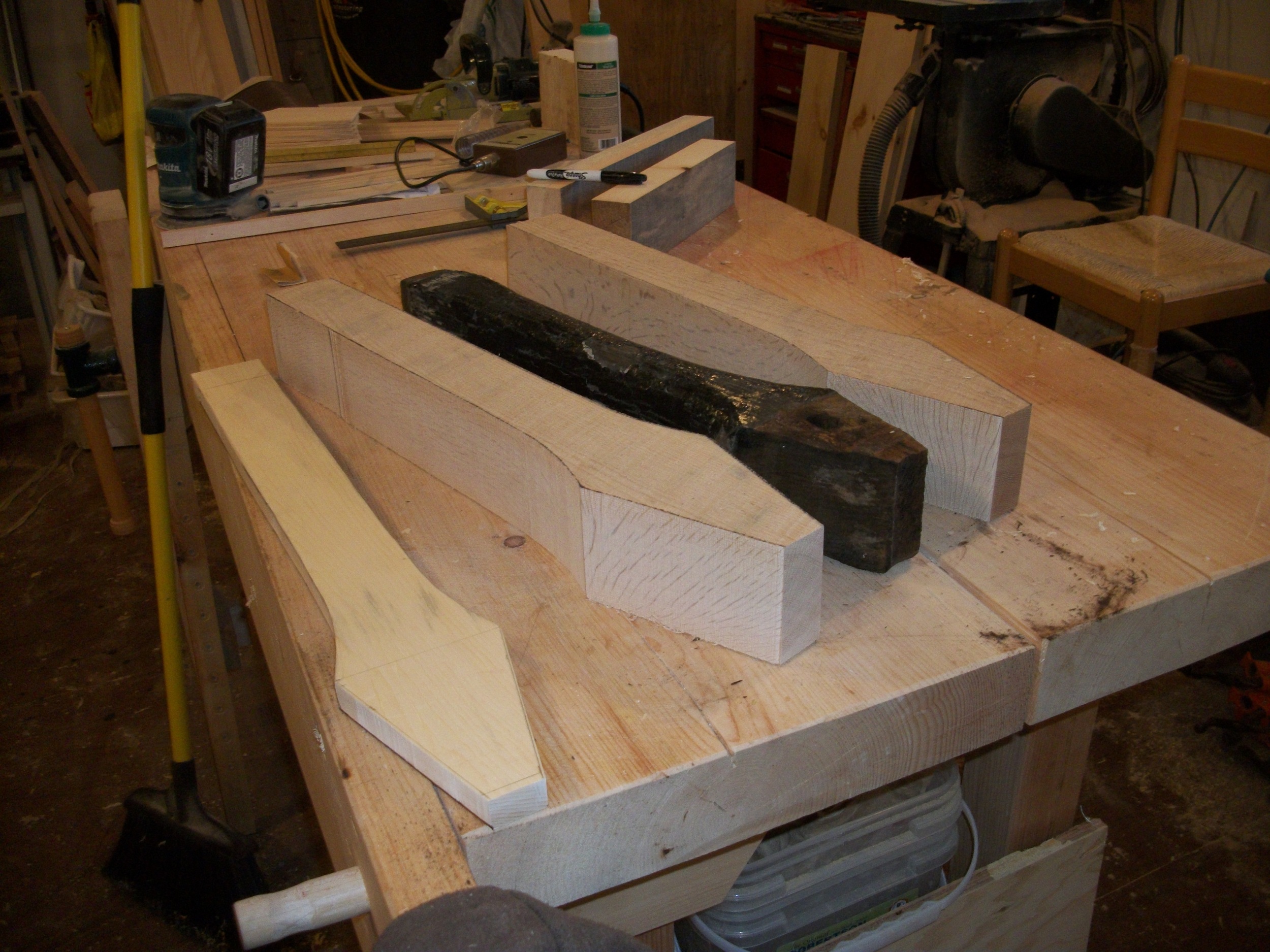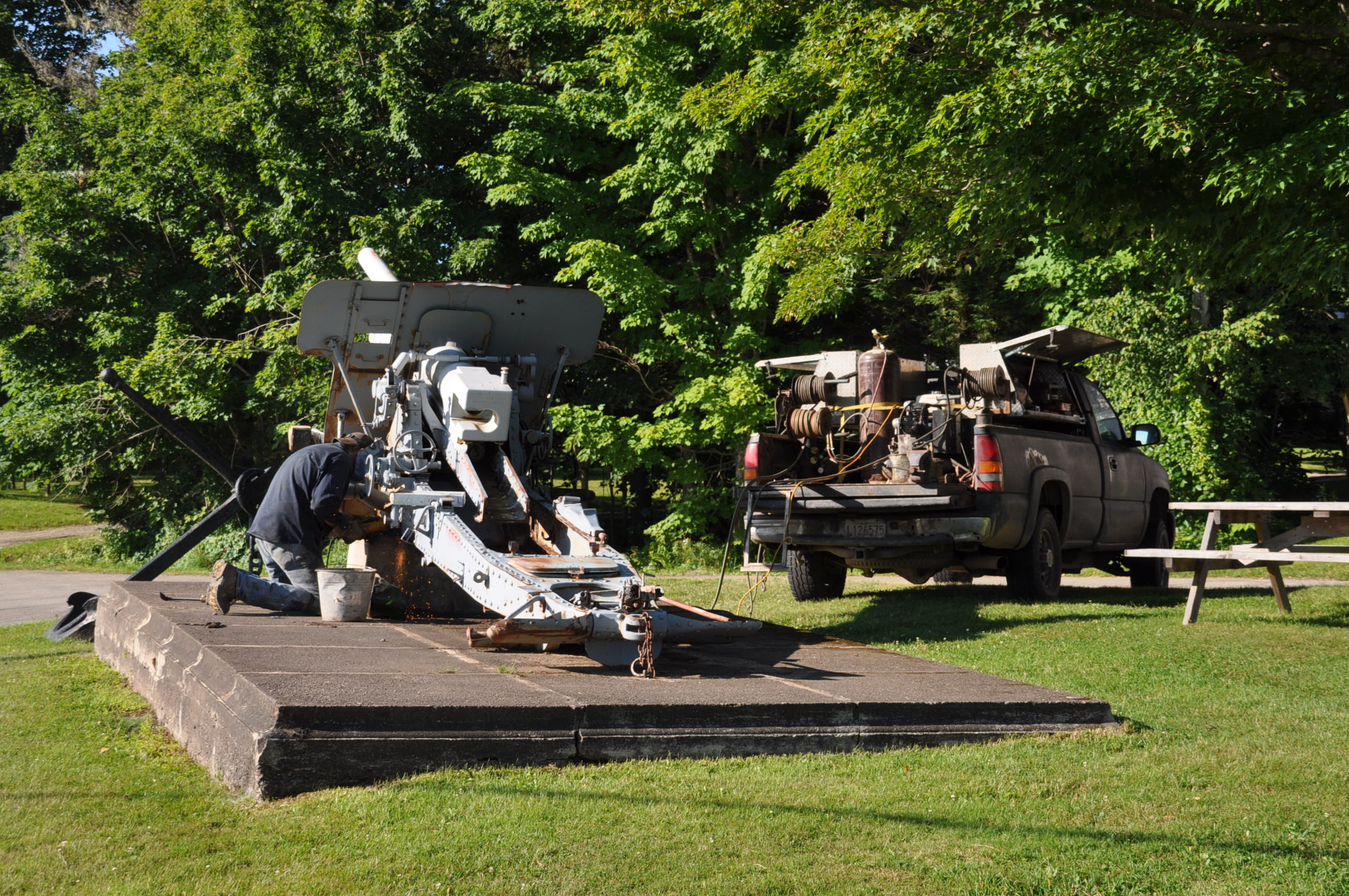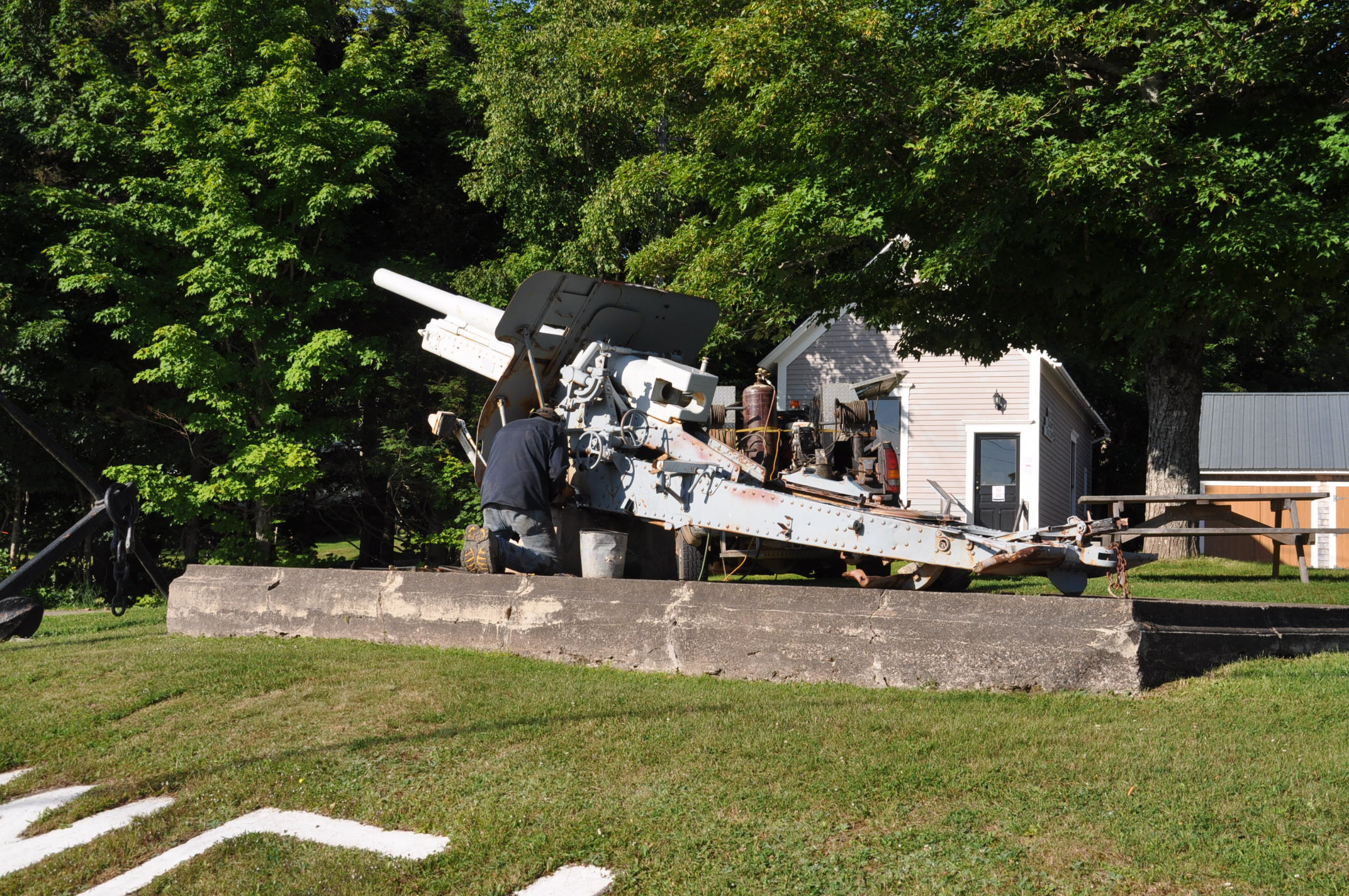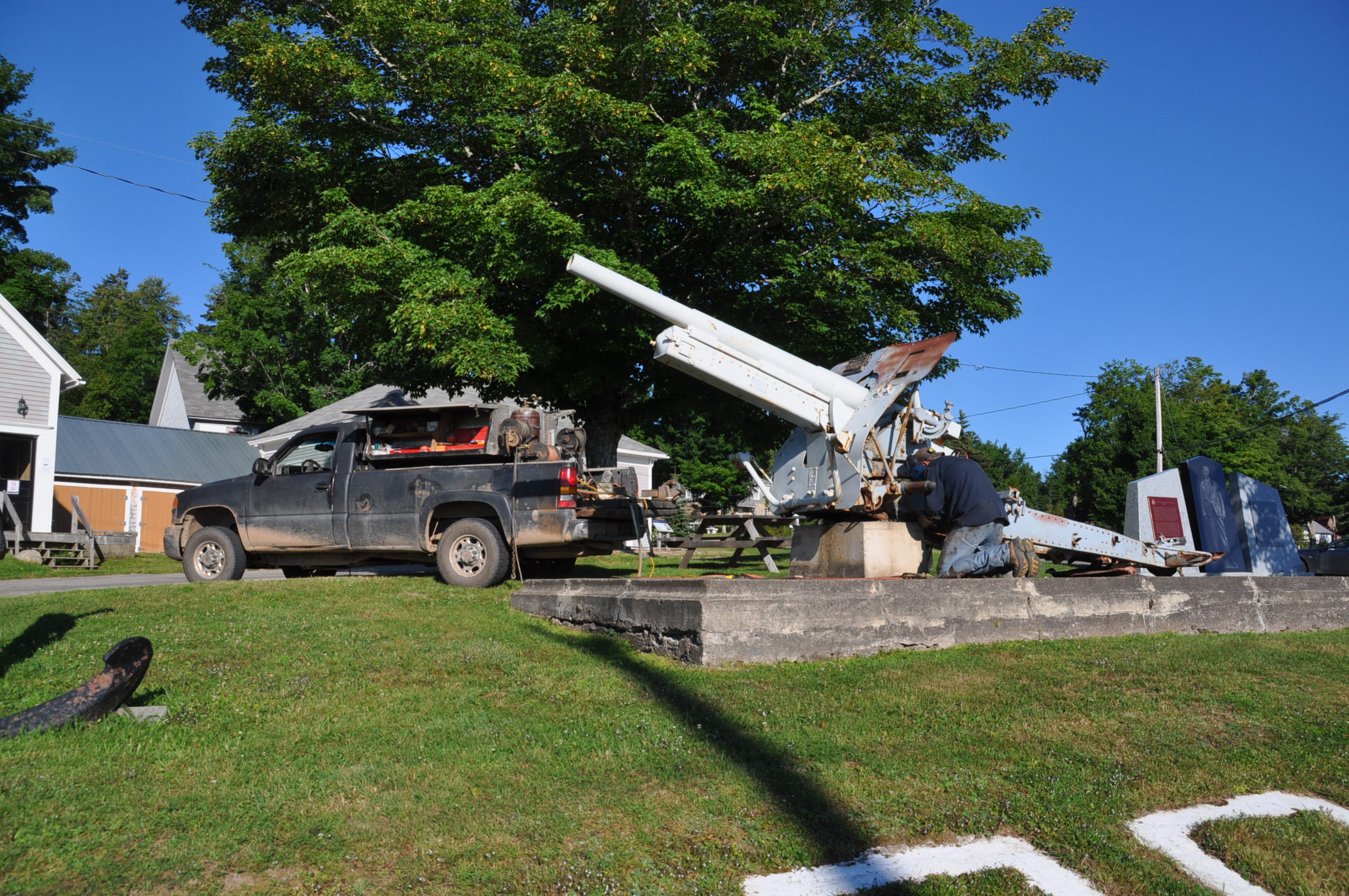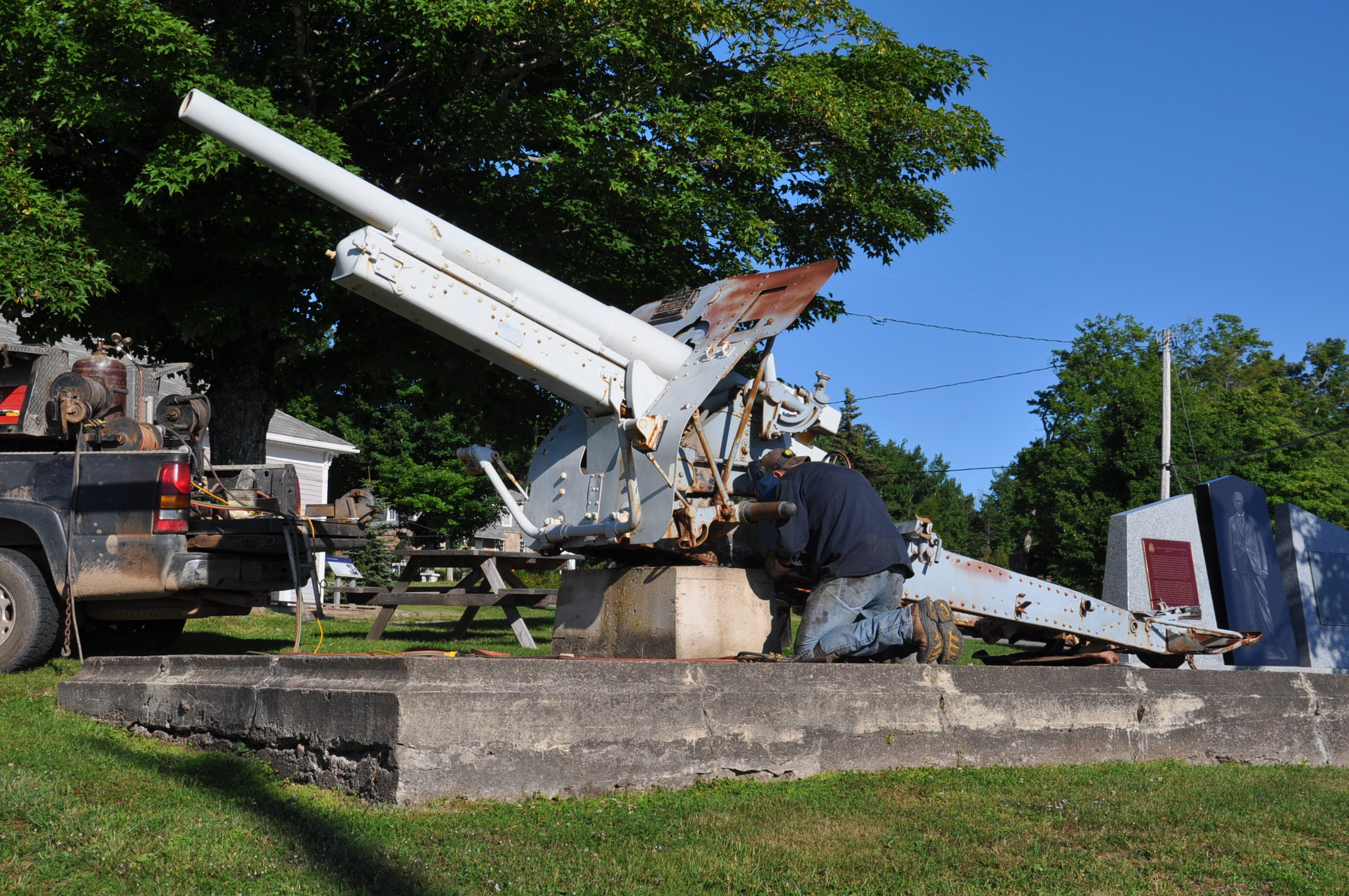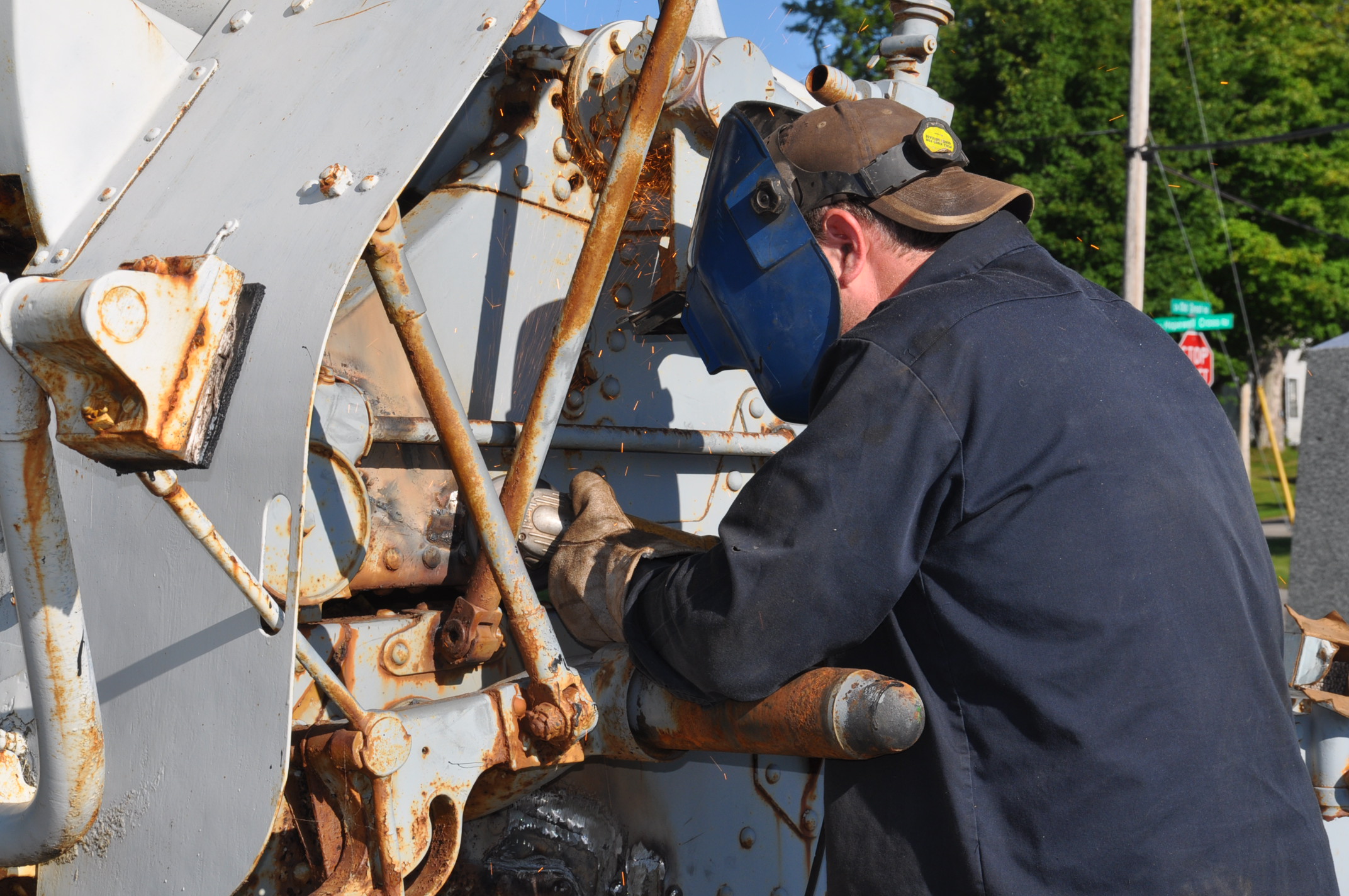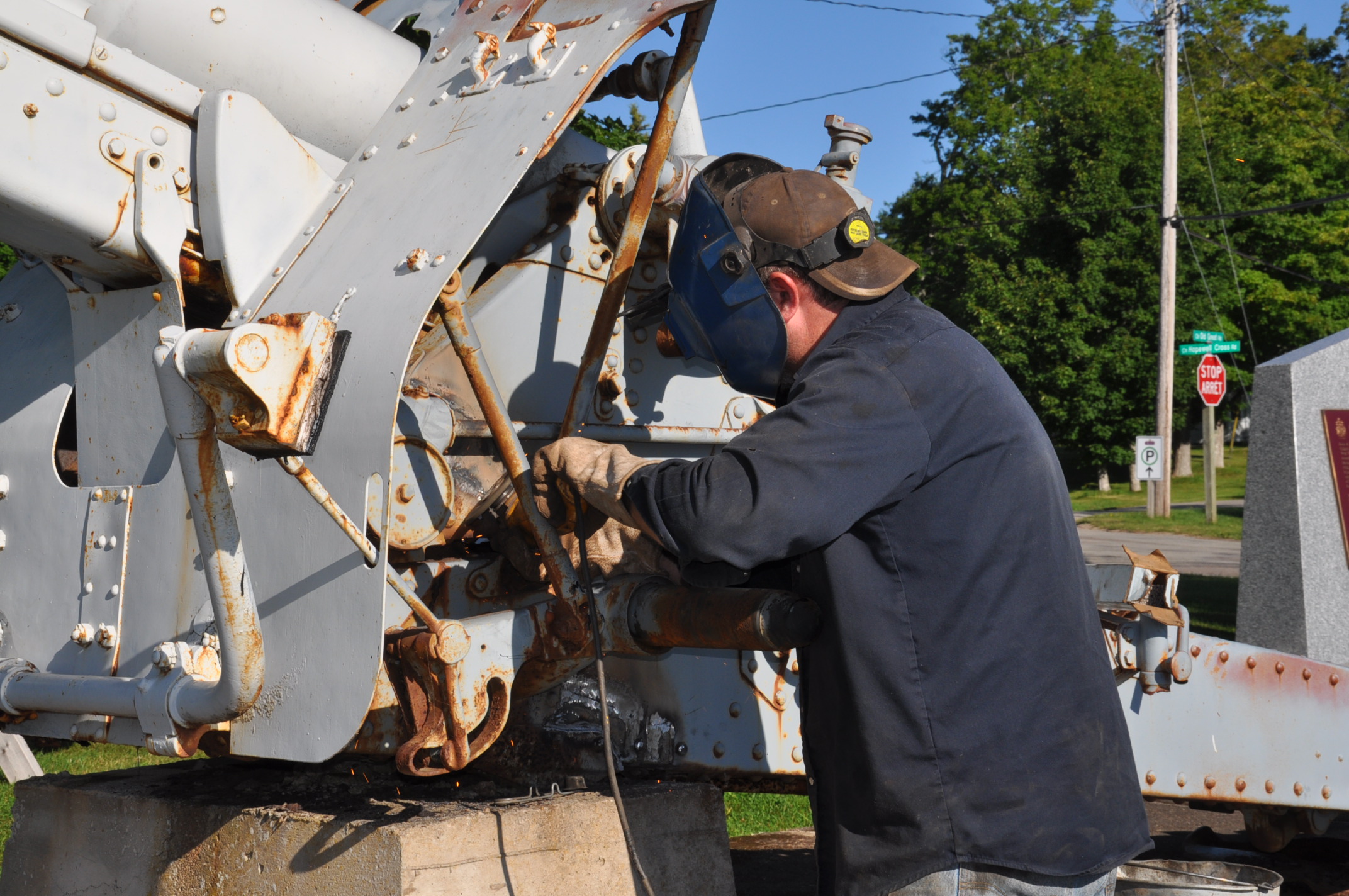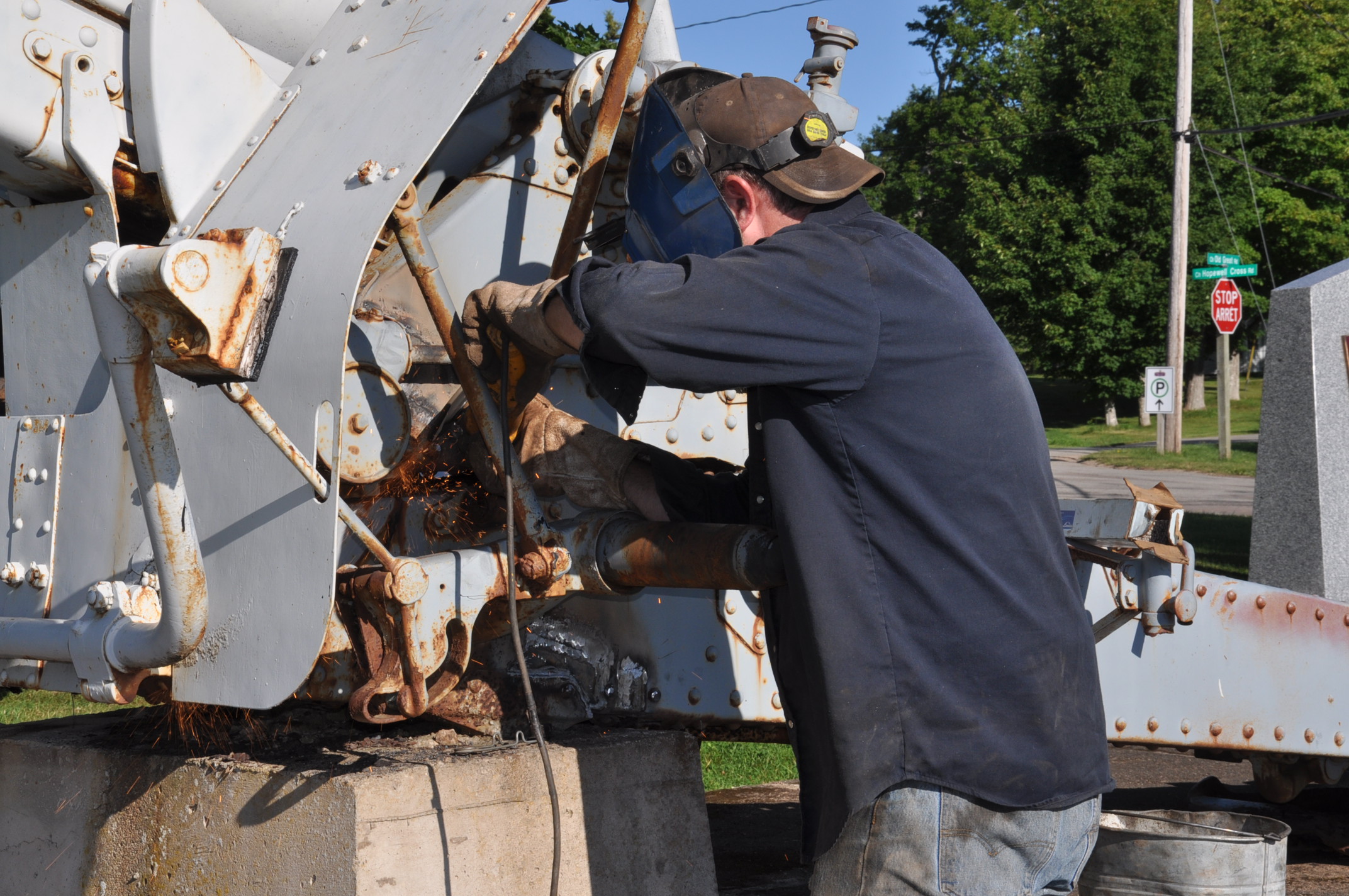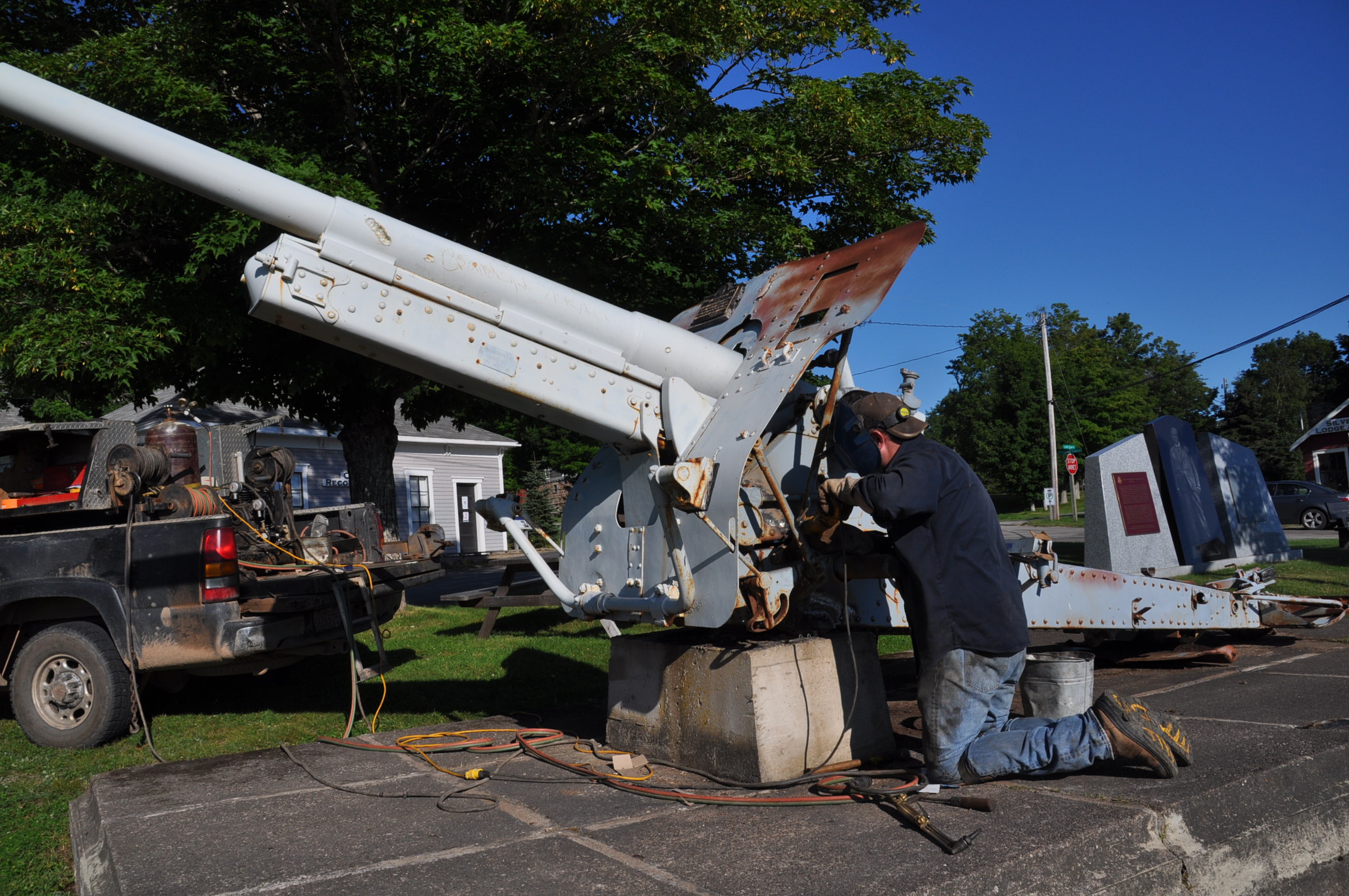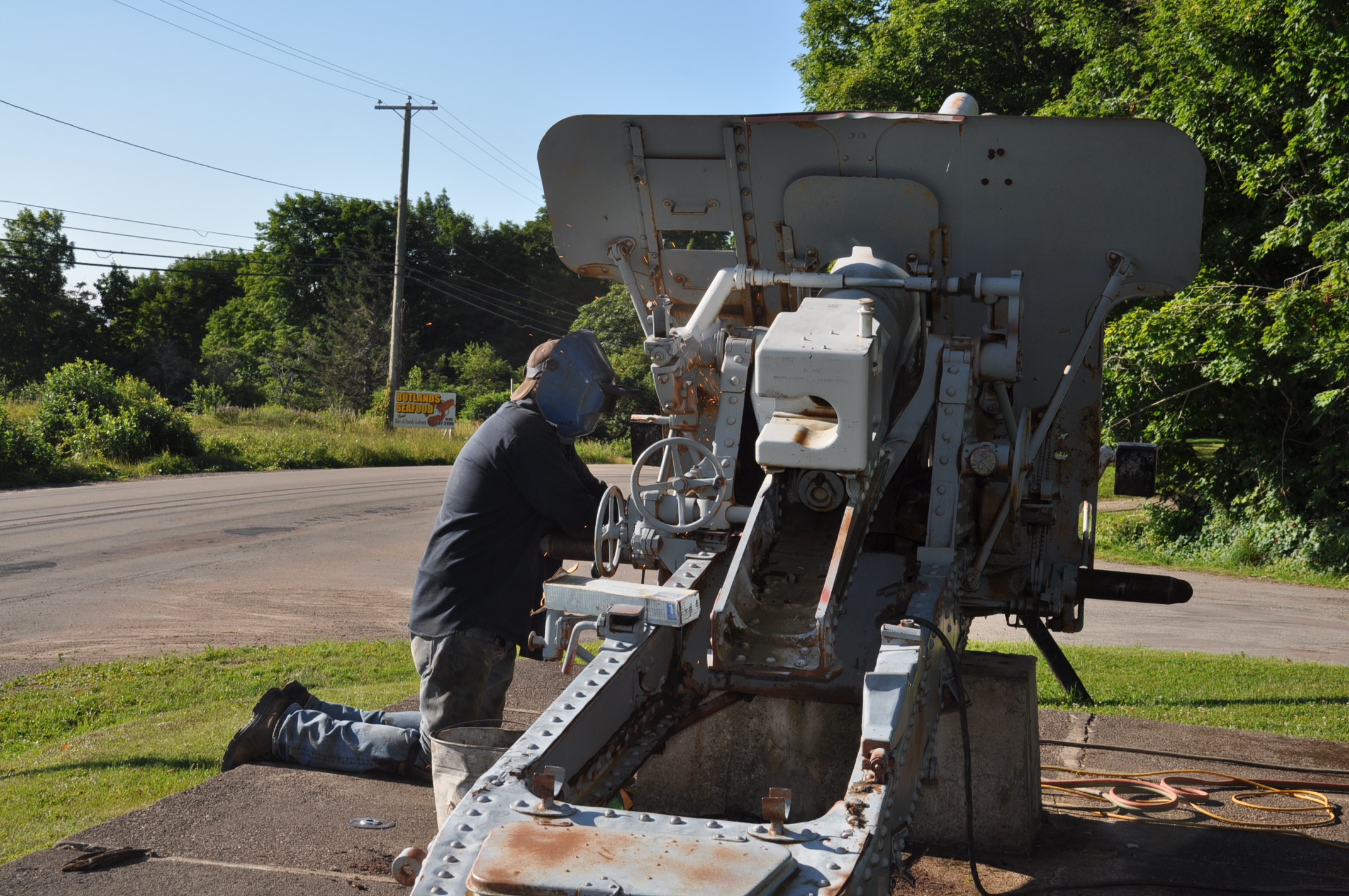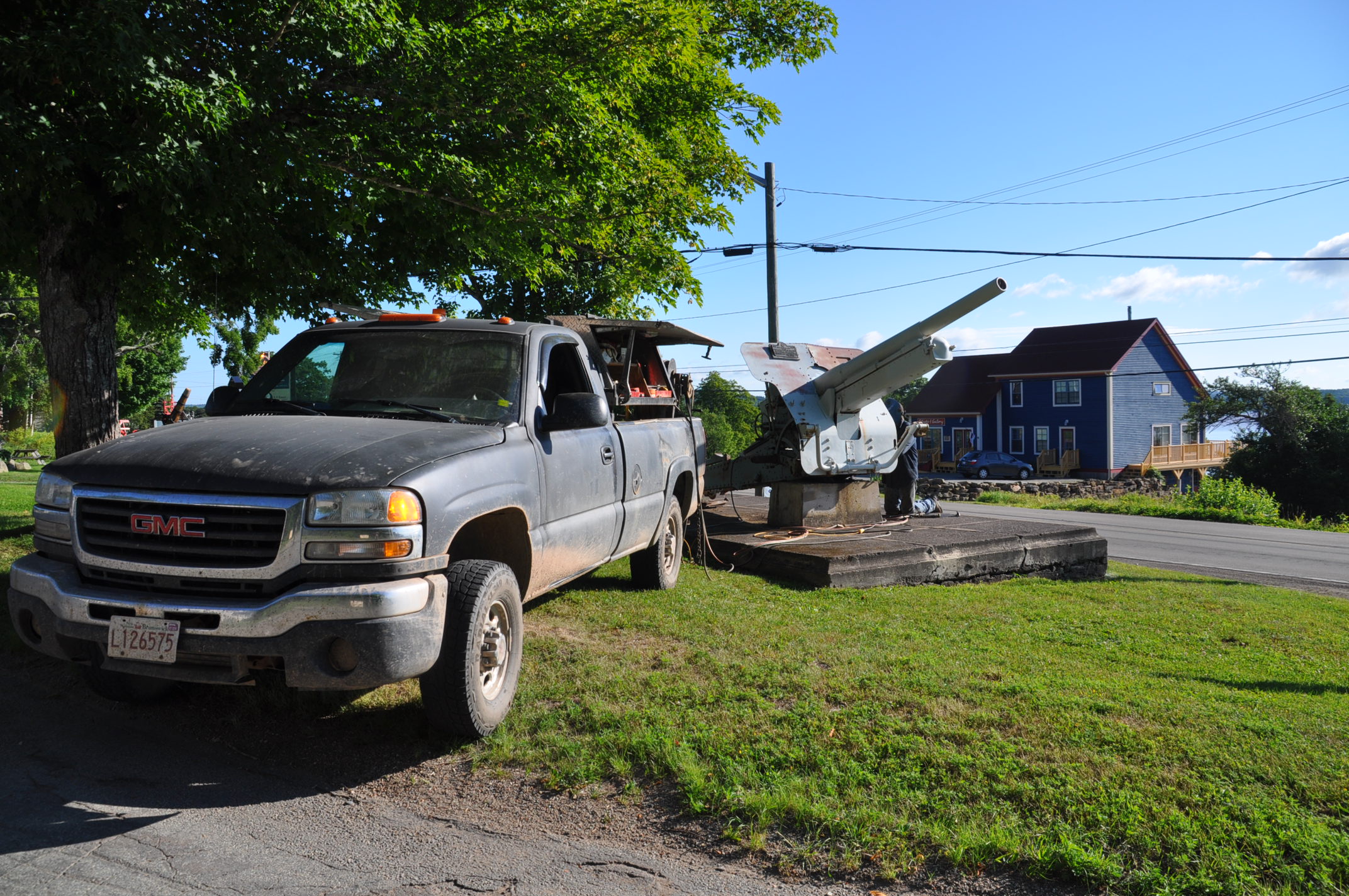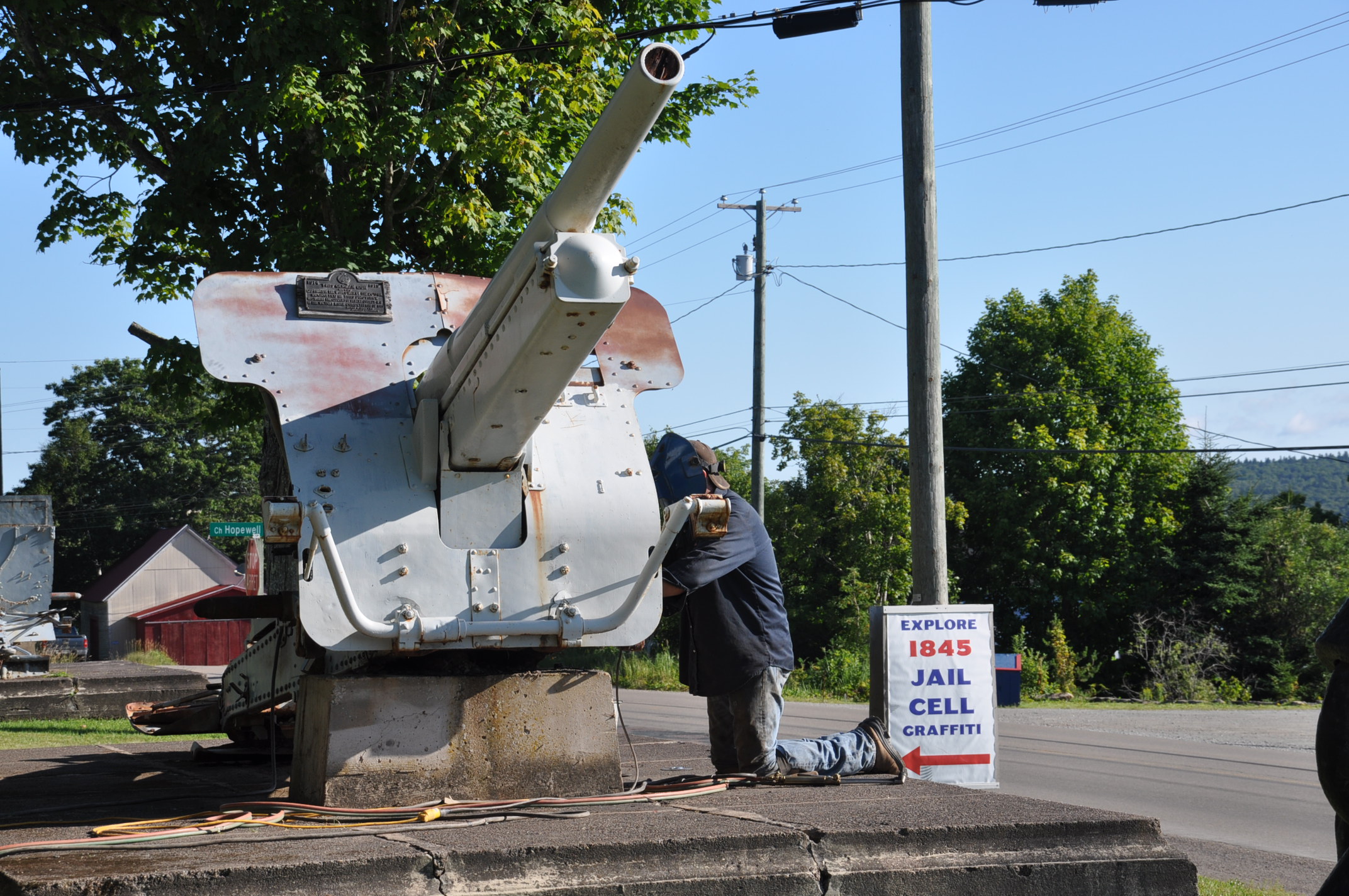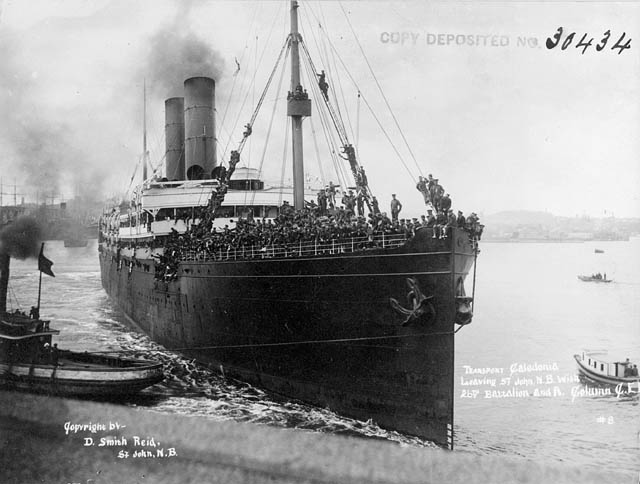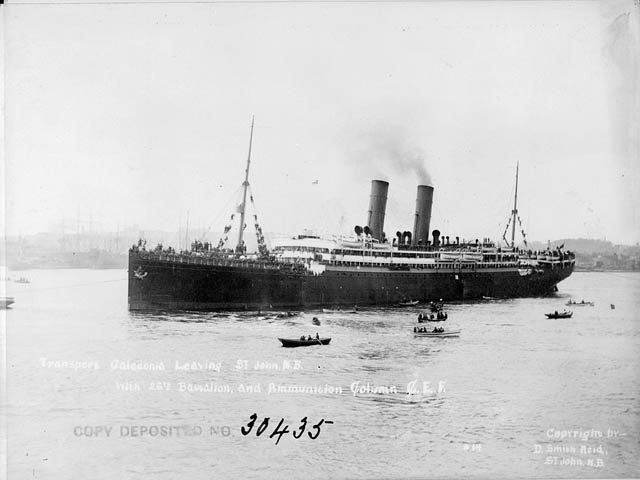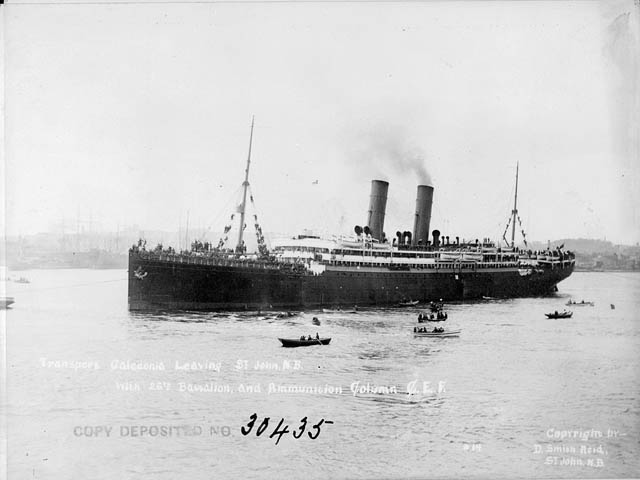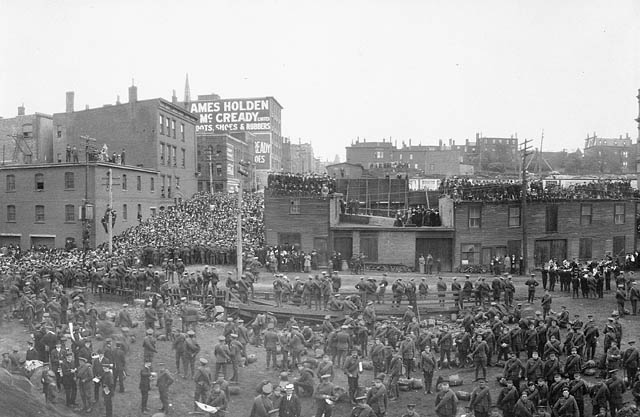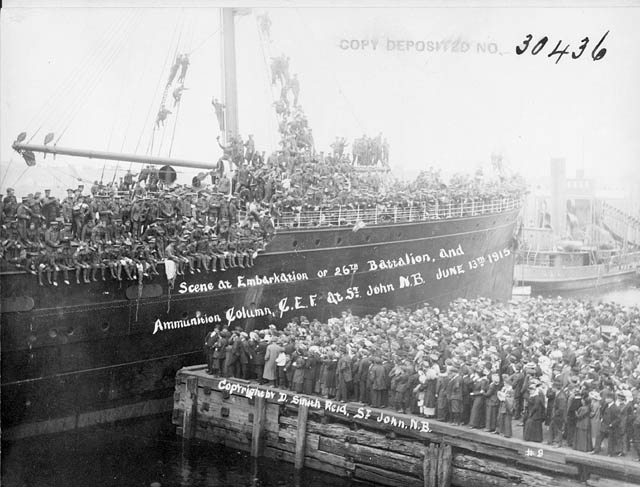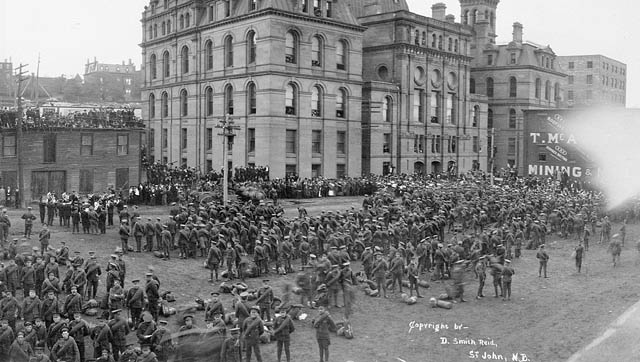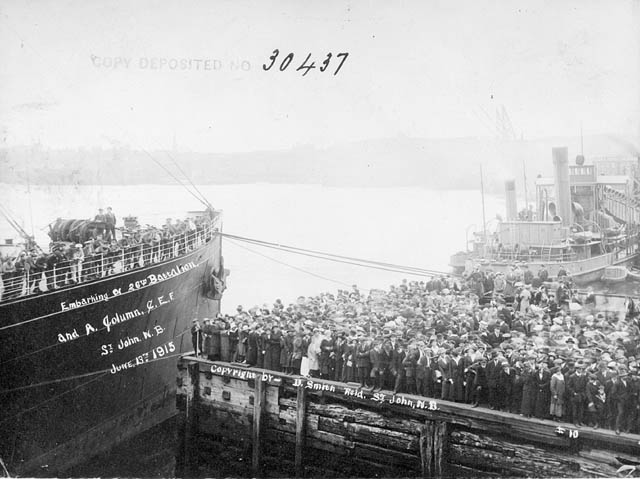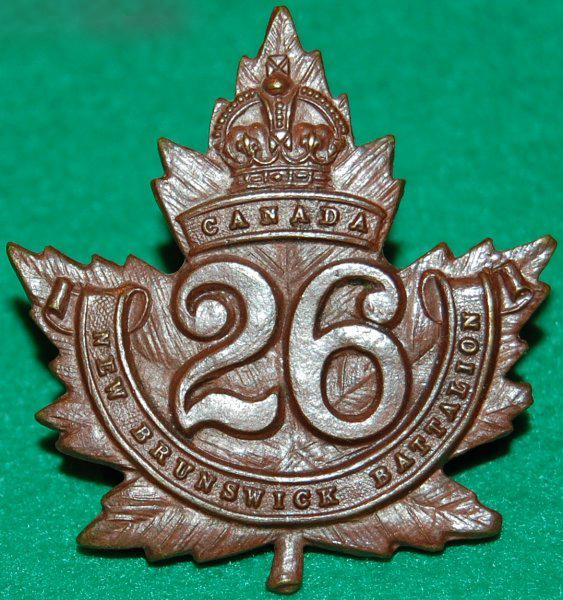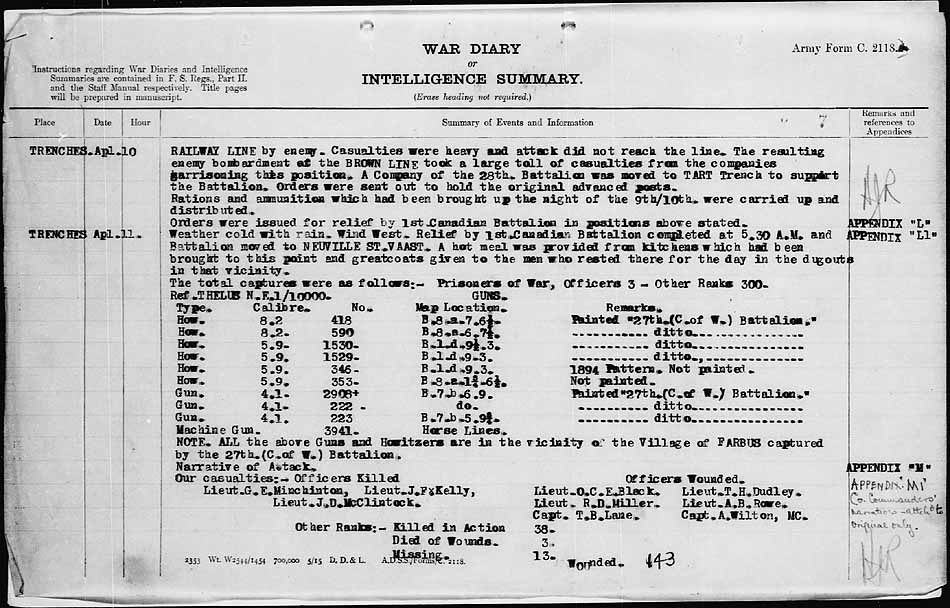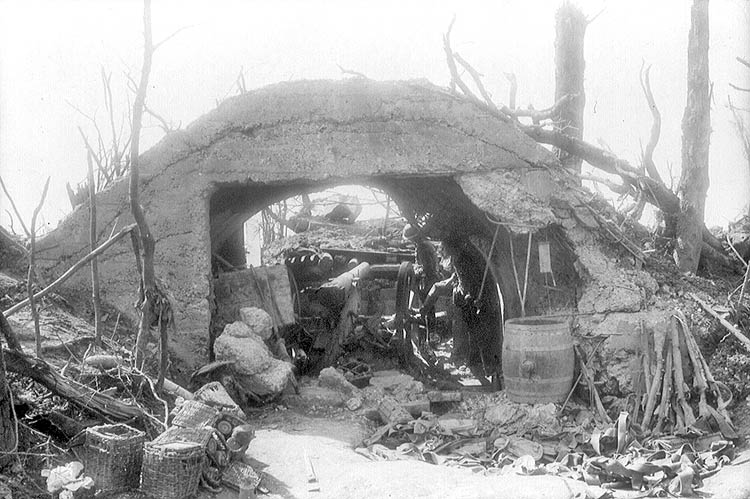We are very pleased to introduce our 2016 fundraising effort for the Victory Cannon Campaign. Our goal is to raise the remaining $5000.00 of the total goal of $15,000.00. The Victory Cannon Campaign is raising funds to restore the First World War cannons located in the Square in Hopewell Cape. The two cannons were captured by Canadians during the First World War and awarded to the people of Albert County. The large cannon was won in the Victory Loans Campaign of 1919, for raising the greatest percentage over our set goal. The second cannon was awarded for Albert County having the largest number of men per capita enlist in the CEF in Canada.
We were fortunate to have noted local artist, Norm Bradford agree to paint an original painting depicting our cannons, which we will be raffling off. Tickets will be $10.00 each with a limit of 600 tickets sold, and will go on sale Opening Day at the Museum (May 21), with sales continuing until all are sold or the draw date at our at our Annual General Meeting in October. The odds of winning are fantastic! (1 in 600 if all the tickets sell).
Here is Norm's amazing painting, and below it are his comments on it. Please be generous and buy tickets!
“The Spoils of War
As an artist who needs to convey a message and emotion through his art, I had to take my time to study how we got to have these cannons, why they’re here in Hopewell Cape Museum and how much it cost us. I was overwhelmed by the cost and the bravery of our local boys who captured these cannons. Below is a description of some of the symbolism in my creation. It took me a long time to plan this painting. I took lots of pictures, visits and composition planning to bring this painting to fruition.
The Cannons: As a realist, the cannons are recognizable, detailed and are central to this work. They are angled in such a way that your eye is drawn to the ghostly young WW1 soldier leaning on a strong maple tree, blowing taps in recognition of the of brave Albert County boys who gave their lives in the First World War, where these German Cannons were captured. The cannons were given to Albert County by Canada in recognition of those who fought, and from the 1919 Victory Loans Campaign.
The ghost: The young man is depicted as half ghost and half solid. He casts a shadow and the light reflects off his clothing. His uniform is what he would have worn at the time of the capture of these cannons. He is gone, but he is still here “lest we forget” the cost in human lives it took to have these “spoils”. He is standing straight and proud against a straight and proud maple tree (a symbolism for Canada).
The dramatic sky: The dark purple, threatening, ominous clouds of war are broken by a ray of hope lighting up the landscape and separating the foreground from the darker background. This ray in a small patch of blue sky signifies victory, hope, pride, freedom, and a brighter future thanks to our young men’s sacrificed and triumph. This light is of utmost importance in this painting. This sky was captured in a picture taken by Doran Milton recently just after a terrible downpour that flooded roads and fields. The light that it cast on the foreground (cows) helped me bring this whole painting together. It was central to bringing the emotion, the drama and the story together.
The background: Although the background is dark and treed, the buildings of the shire are recognizable although not to scale, not in the proper disposition. This an artist can do and no photographer can. The buildings have the light of the illusive sun also separating them from the dark green background. Bennett’s monument and plaques are also in view and centrally located.
The red poppies: although, there are no poppies in reality, they are in the painting to again remind the visitors that these cannons were not easy spoil, but won by many sacrifices.
Respectfully,
Norm Bradford”
